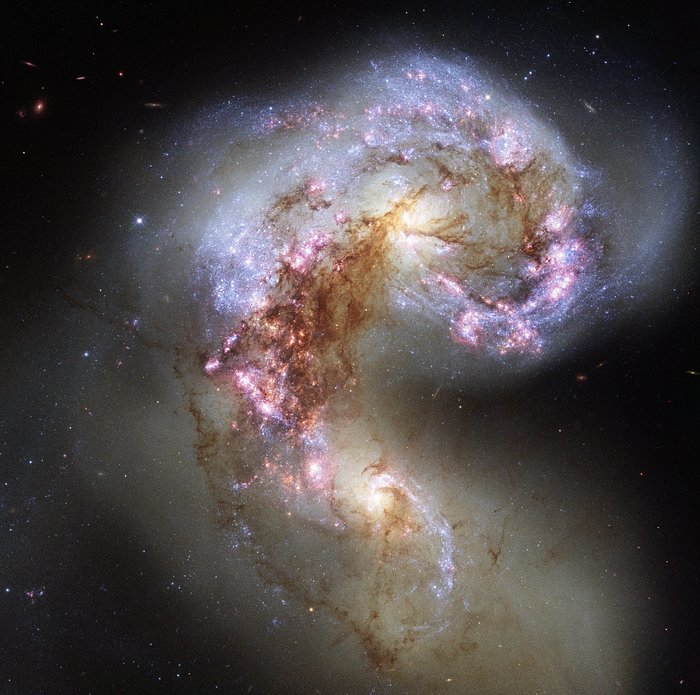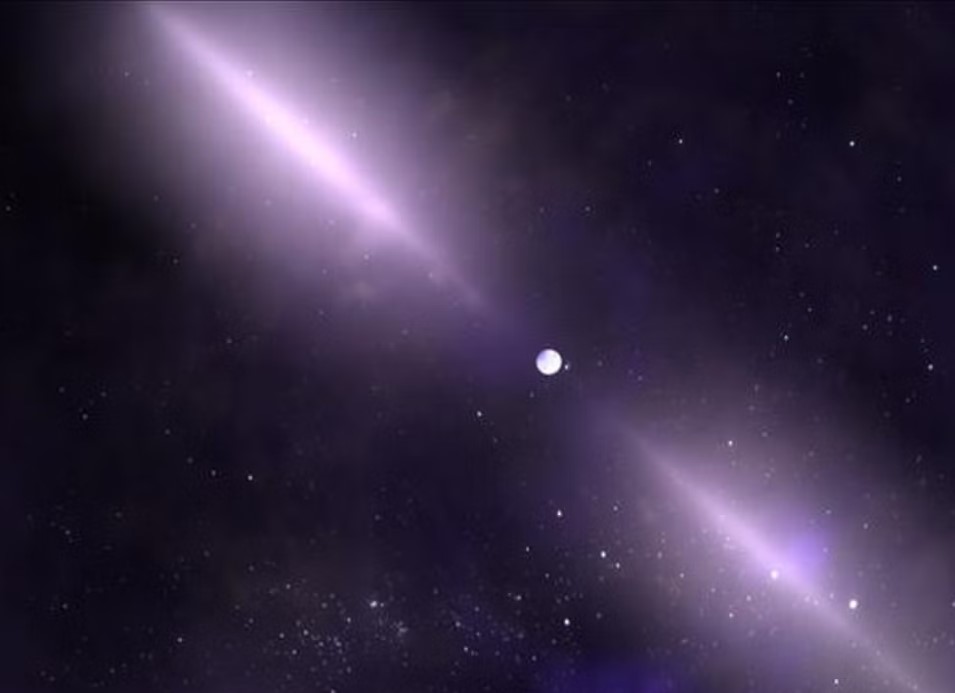This colorful composite, captured by the now-defunct Spitzer Space Telescope, shows dark, smoky filaments snaking across a portion of the Nessie Nebula. In the center bottom of the image, a giant tear-shaped yellow bubble crashes into dark, stringy clouds. Right where the bubble intersects with the filament lies a luminous protostar dubbed AGAL337.916-00-477. Its location suggests that the collision between the expanding bubble and the cold, dark cloud is what triggered the star’s birth.

Shocked gas
“The gravity in this dense filament primes it to collapse into stars. If a hot star is born in the filament, it forms an expanding bubble that can collide with the filament and send it over the edge to form a new star,” Jim Jackson, lead author of the research and director of West Virginia’s Green Bank Observatory, said in a statement. This is called triggered star formation, and astronomers have now seen evidence of this occurring within Nessie, they announced at the American Astronomical Society’s 242nd Meeting this month in Albuquerque, New Mexico. The research can help experts understand the mechanics behind star formation and what happens within a nebula after a star is born.

Jackson and his team used data collected by NASA’s now-retired flying observatory SOFIA, the Australia Telescope Compact Array, and the Mopra Telescope near Sydney, Australia, to find the smoking gun of an interaction between the expanding bubble and filament.
The team found emission from warm ammonia gas and silicon monoxide near the protostar, where the bubble meets a cold filament. Warm molecular gas is the sign of a shock created by the bubble slamming into its surroundings at supersonic speeds. And that shock birthed AGAL337.916-00-477. “With these data, we can see the triggering process in action,” Jackson said.
Like dominoes
Named after its long, meandering shape that resembles the Scottish Loch Ness monster, the Nessie Nebula is nearly 300 light-years long and one to two light-years thick. It traces the Scutum-Centaurus spiral arm of the Milky Way Galaxy and consists of long, dense filaments of gas and dust, known as infrared dark clouds.

Nebulae like Nessie or the famous Lagoon Nebula (M8) are giant clouds of dust and gas in space. Eventually, stars are born within them when the clouds of dust and gas are pulled together by gravity and collapse, triggering fusion: the beginning of a star.
Light from budding stars eventually shifts and disperses their dusty nurseries, sculpting and carving out structures in the nebula. Hot stars can form bubbles like the one seen here. These expanding bubbles bump into their denser surroundings, setting off star formation.
Astronomers suspect that AGAL337.916-00-477 may now set off a chain reaction that will trigger other stars to form along the filament. “The energy produced by the new stars forms new hot, expanding bubbles, colliding with pockets of cold gas in the filament, pushing the filament’s gas at the collision site over the edge to trigger even more star formation, falling like dominoes down the line,” Jackson said.
